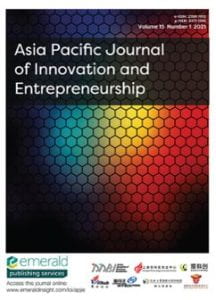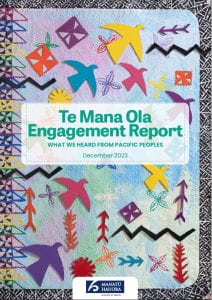Before you starting looking for information, clarify what you need. This will help you search more effectively.
Identify your information need
Analyse your assessment question to clarify what information you need
Ask yourself:
- What are the main ideas or topic words in my assessment question?
- What is the specific focus or context of my assessment question?
- What types of information sources am I expected to use?
Then ask yourself:
- Do I need to do some background reading to understand more about my topic?
- What am I not sure of? What is the meaning of…(Link to Reference sources)
- Do I need to ask for clarification from my lecturer or tutor?
Want to learn more?
Visit:
- Analysing your question
- Reference sources – for defining new concepts or words (click on the Reference sources tab)
- Primary and secondary sources, information types and scholarly sources – to understand more about different information sources
Identify keywords to help you search for information
- Think of keywords to describe your topic – Use a thesaurus or reference source (click on the Reference sources tab) to help you think of alternative keywords
- Select a method to organise your keywords, e.g., mind map or keyword table (see below).
Keyword table
-
- Head each column in your keyword table with a different idea you need to research.
- Beneath each idea, list your alternative terms with the same or similar meaning.
- Use combinations of these keywords to construct your searches in the catalogue or library databases.
- Consider alternative words for terms, such as:
- NZ terminology and the international equivalents (e.g., rubbish (UK/NZ) is also known as garbage (US))
- Different spellings, such as US versus UK (e.g., neighbourhood (UK/NZ) or neighborhood (US))
- Broader and narrower terms (Link to Broader/Narrower in Arts Hub?.
TOPIC: Educating for sustainability in New Zealand schools
| idea 1 | Idea 2 | Idea 3 | Idea 4 |
| educating/education | sustainability | New Zealand | schools |
| teach | environmentally conscious | Aotearoa | High school /college |
| learn | green | primary |
Want to learn more?
Visit: How to find information
What type of information do you need?
For some assessments, you will need to use different information sources (e.g., primary or secondary), information types (e.g., journal articles, images, etc.), or scholarly literature. Make sure you know what you are looking for. Check your assessment instructions for guidance.
What are primary sources?
Primary sources are materials created at a moment in time. They can provide a first-hand account or information about an event, people, or experience and have not been altered by interpretation or evaluation.
Common examples of primary sources
 |
 |
 |
 |
| Texts | Creative works | Audiovisual | Research data |
| Diaries, letters, emails, social media posts, official and legal documents | Photos, paintings, poems, sculptures, music, relics | Recordings of speeches, music or other events | Statistics and research data |
Want to learn more?
Visit: How to find information
What are secondary sources?
Secondary sources interpret, analyse, review or summarise primary sources, e.g., scholarly journal articles, book reviews, and textbooks discuss findings from previous research.
Why use secondary sources?
A secondary source bring together information from other sources and can provide expert analysis and context on a topic.
Examples of secondary sources
 |
 |
 |
| Textbooks, encyclopaedias, handbooks | Scholarly journal articles, news or magazine articles | Reports, reviews |
Want to learn more?
Visit: How to find information
You can find a wide variety of information types in the Catalogue, databases and beyond.
Learn more about these item types and how to find them.
 What are scholarly sources?
What are scholarly sources?
At University, you will mostly use scholarly (or academic) sources to learn and complete assessments.
Two common scholarly sources are journal articles and books.
What are peer-reviewed sources? Some scholarly sources undergo a peer-review process where the quality of the information is checked by experts before publication.
When searching the library catalogue or a database, check to see if you can filter your search results to peer-reviewed sources.
How do you identify a scholarly source? Use this table to learn the key differences between scholarly and popular sources.
| Academic sources | Popular sources |
| Written by researchers and based on expert research, facts and figures | Tend to be more opinion-driven |
| Peer-reviewed by other experts in the field | Often written by journalists or an anonymous author and may not supply credentials |
| Usually, have an abstract, citations and a reference list | Rarely contain citations or a reference list |
| Published in peer-reviewed journals, books and reports | Can be published in newspapers, magazines or online, but not peer-reviewed, so you will need to critically evaluate their quality |
| Are the best sources for theoretical and expert evidence to support your arguments in your assessments | Are useful when trying to find background information and public opinion on a current event or issue |
Tip: Just because something isn’t peer-reviewed doesn’t make it bad information – you just need to evaluate it yourself.
Want to learn more?
Visit: How to evaluate information
Grey (gray) literature is a term used to describe various information types produced by individuals or non-profit groups, government departments, trade or industry or professional groups, private companies or academic or research institutes.
The type of grey literature that could be useful to your research will vary according to the subject area. Some common types include:
- articles
- reports
- pamphlets
- working papers
- white papers
- policy documents
- theses
- conference proceedings.
Why use grey literature?
They can provide more current information on a topic; however, you will need to critically evaluate the quality of information as unlike academic information sources, grey literature may not go through a peer review process.
Grey literature is not produced by traditional commercial or academic publishers. This means they can be less discoverable or accessible as they are made for a specific audience, e.g., for company research, annual reports and other financial data may only be available to stakeholders or accessible through subscription databases.
Want to learn more?
Visit:
How to find information
Subject Guides

